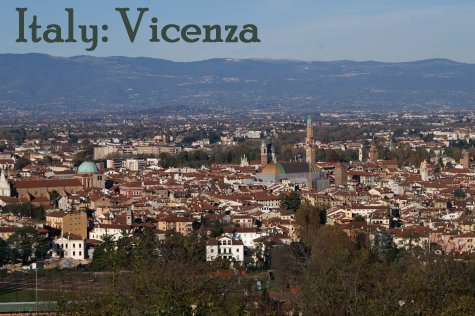
 |
Vicenza is our hosts' home city and they are justifiably proud of its illustrious history, gorgeous setting, and fascinating sights. Hometown of super-architect Andrea Palladio, they were particularly keen to point out his influence on the buildings in and around Vicenza, and we felt like we were living a scintillating history of art class throughout the day. Here is my blog post covering our whole Italian weekend; Vicenza is the second "V" city we visited, and is in the second section of the post. There are many more pictures (nearly 100!) of Vicenza and environs in this Flickr set.
And, if you want to follow along geographically with our sight-seeing, here is a map:
View a larger version of my Vicenza map.
Upon entering the old city, we found another map, this attractive one, although we didn't really need to know where we were going, since we were in such capable hands. But a tourist wanting to walk around on their own would find it useful, I'm sure. On the right below is an example of the lovely domestic architecture that's all over this part of town, and in the middle an example of the classical scale of almost all of the architecture.
 |
 |
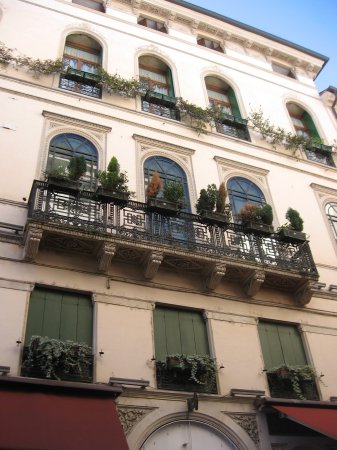 |
The main plaza in the old part of Vicenza is the Piazza dei Signori. And its centerpiece is this absolutely gorgeous Renaissance tower—Torre Bissara. Its delicate appearance, in spite of its immense height, not to mention its lovely decorative touches, make it one of my very favorite towers among all those I've seen in Europe.
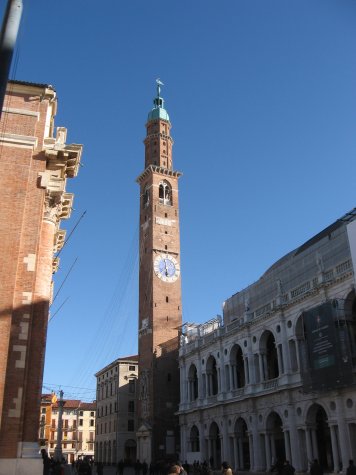 |
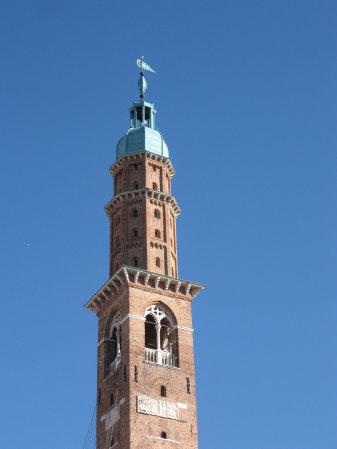 |
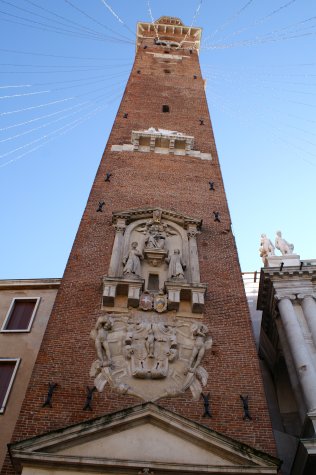 |
There are other fabulous buildings in this large piazza, too. On the right of the tower in the photo at left above is the Basilica Palladiana, which was not only designed by Palladio but whose construction was supervised by him personally, although it wasn't completed until after his death.
Here is a closer look at the archtypically Palladian design elements that make up the facade, and a statue of the great man himself which is next to it.
 |
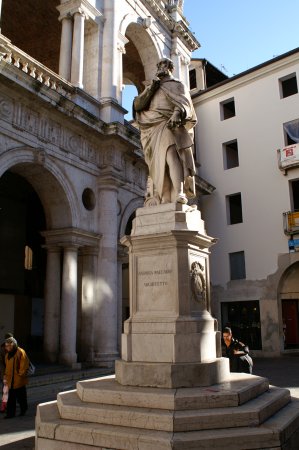 |
At the other end of the piazza from the Palladio statue are these ubiquitous columns which are found in cities all over the Veneto, and which remind us they were all once part of the Venetian empire. On the right is a Palladian column detail, a lovely Corinthian capital, from a Piazza building.
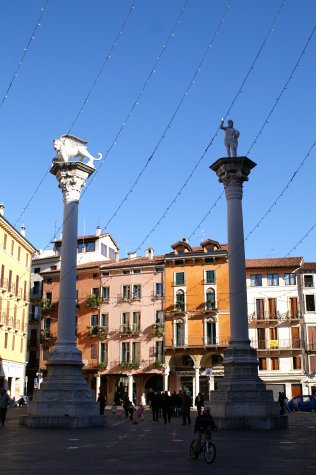 |
 |
The Torre Bissara isn't the only tower in the city. A chunkier example, that you can see on the left below, is the Porta Castello Torre, whose name refers to the gate next to it. On the right is an attractive Vicenza residence that has a very interesting pedigree. It's the house of Antonio Pigafetta, who our host feels should be as well-known as his sailing companion, Fernando Magellan. Pigafetta was with Magellan on his round-the-world cruise, but he actually sailed all the way around (while Magellan died during the voyage).
 |
 |
One of Vicenza's most amazing buildings is amazing for its insides, although it was also designed by Palladio. The Teatro Olimpico, whose grounds you see on the left below, has a stupendous trompe-l'œil stage that allows audiences to feel they're watching a much larger production than they actually are. (And productions are still presented in the theatre, not bad for a structure erected in the 1580's!). On the right below is one look at the stage.
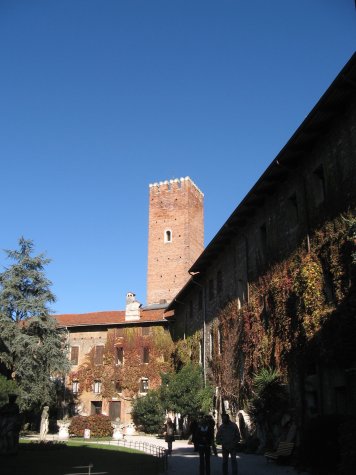 |
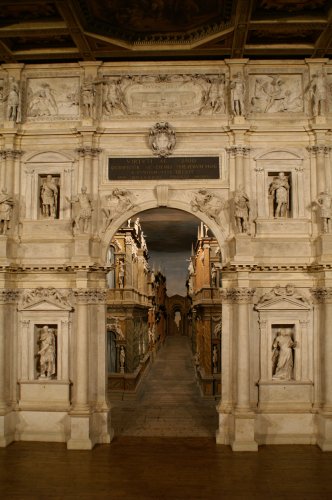 |
I know it looks like the stage extends back quite a ways but it really doesn't! I just love trompes-l'œils, especially when they are done as well as this one, where it's almost impossible to see the "trick." Here are some more more shots inside the theatre. Flash wasn't permitted, so Henry's and my cameras got different color results. His are the good shots of the stage; mine is the one in the middle, of the ornate statuary above the stage itself and around the seating area.
 |
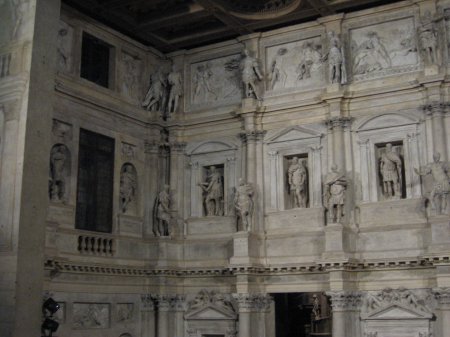 |
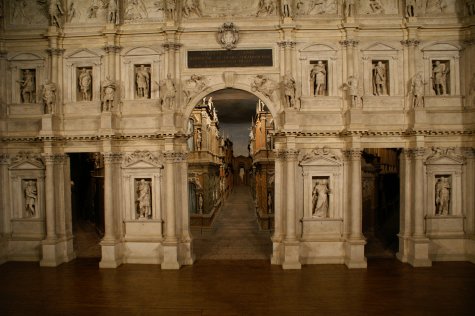 |
After our stroll around the old city, our hosts drove us to the hills overlooking the town. What great views! Here are two, one featuring the town itself (note the Bissara Tower) and the other highlighting Vicenza's proximity to the scenic Dolomites.
 |
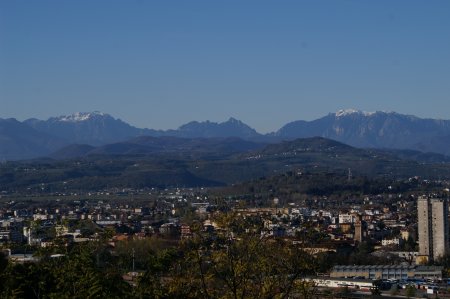 |
The location for these views isn't just a bare hillside. It's the grounds of the Basilica di S. Maria di Monte Berico, a really lovely church that I'll have photos of for you in a moment. But for now I'll show some of the features of the viewing area. It's encircled by this lovely balustrade, the top of which doubles as a viewfinder, pointing to various distant locations. The sighting notches in the picture on the right point to Bassano, a town some 25 miles away.
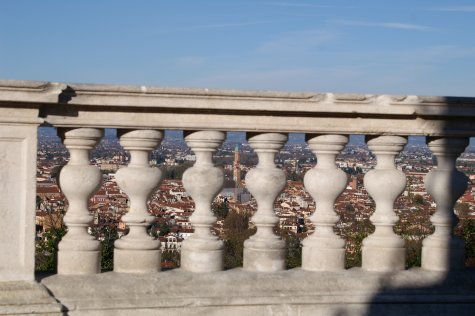 |
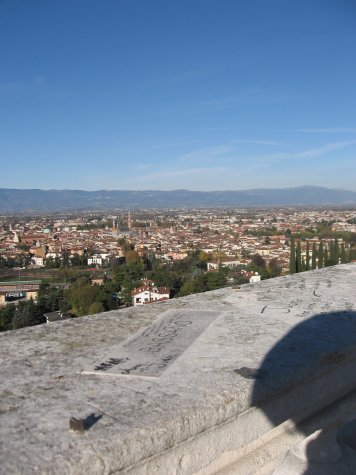 |
Here is one last view from this great vantage point:

Now for the church. It would be impressive in any setting, but on this hill it's really a dramatic sight:
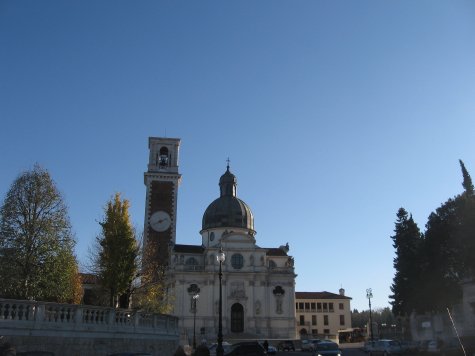 |
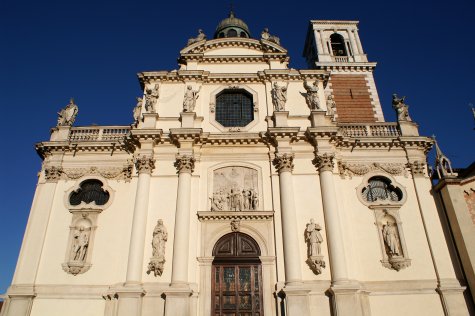 |
What a gorgeous structure! It has another gaily decorated tower, and paired with the main body of the church, it's just fabulous!
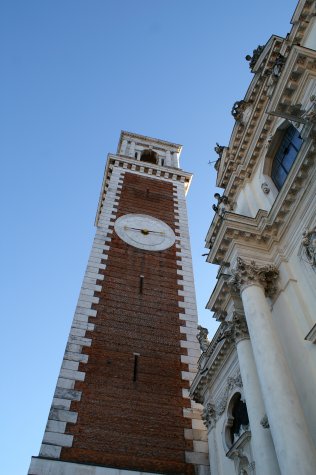 |
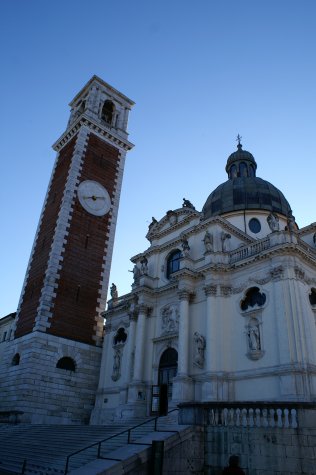 |
There was actually a service going on while we were there, but Henry was very discreet and managed to get these shots of the beautiful interior. I love the statuary "sitting" on the balustrade under the dome:
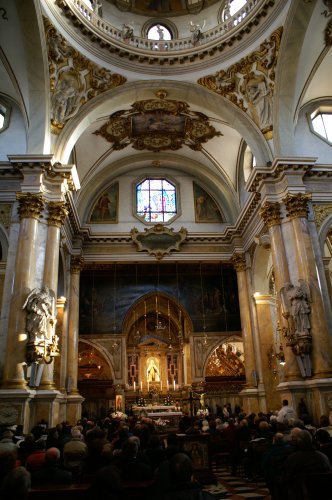 |
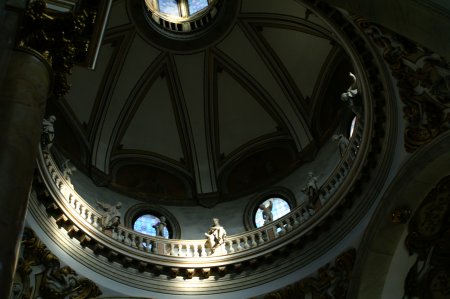 |
On our way out of town after all the sight-seeing, our hosts had one more treat for us. Or, actually, two. A couple of villas that I could fantasize about living in, for sure. On the left is Palladio's "Rotunda," said to be the inspiration for Jefferson's Monticello. On the right is Villa Valmarana ai Nani, a non-Palladian villa famous for its sculptures of dwarfs and Tiepolo frescoes inside.
 |
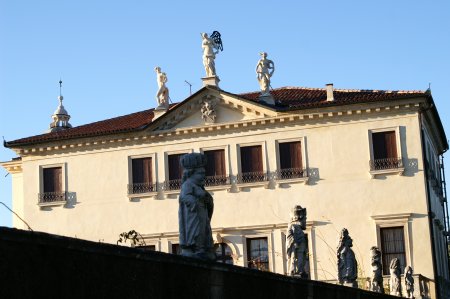 |
If you're interested in seeing more villas, Wikipedia has this handy "Palladian Villas of the Veneto" with lots of information and links to articles on each villa.
 |
Back to Dream Season home • Back to Italy home